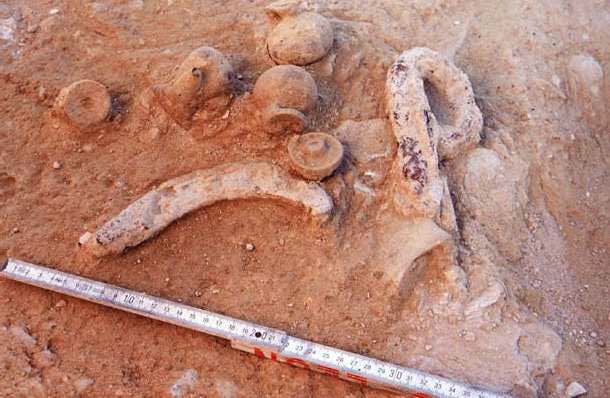Mysteries of Despotiko: The Tale of an Ancient Lady
In the heart of the Aegean Sea, south of Antiparos, there's a tiny, uninhabited island called Despotiko. This little gem is home to an ancient sanctuary that has been a playground for archaeologists.

The sanctuary, nestled in a spot known as Mandra, has given up a wealth of artifacts that tell tales of the island's rich history. One of the most captivating finds is a large female figurine, lovingly named 'Pipina' by the explorers.
Pipina was found hidden beneath the floor of what was identified as the sanctuary’s main building. This figurine, with its unique size and features, was initially thought to be an early religious icon. However, after a closer look, a new theory emerged. Pipina might not have been a religious icon after all, but a support for a vessel used in the rituals at the sanctuary.
The figurine was discovered among a treasure trove of artefacts, including drinking vessels, perfume and miniature vases, bronze and iron objects, jewellery, gems, imported faience and ivory objects, and even an ostrich egg. These items were carefully placed beneath the floor, suggesting they were intentionally left as offerings during the mid-6th century BC.

Pipina herself is a sight to behold. The preserved upper part of the terracotta figurine was pieced together from many fragments. She measures 0.25m from the waist up, with a triangular face, large open eyes, and long, black curly hair. Pipina is dressed in a long garment with short sleeves, decorated with a diamond pattern.
The figurine's hairstyle and other features suggest a connection with the Daedalic style, a style of ancient Greek sculpture. She has been compared to similar large terracottas from various sites, although she seems to have more in common with objects from the Cycladic and Attic regions.
The most intriguing part of Pipina is the open shape attached to the top of the clay ring on top of her head. This feature led to the theory that Pipina was not just a figurine but a support for a vessel, possibly an incense burner or a water container used for purification rituals. This theory is further supported by the discovery of two additional fragmentary large figurines at the site.
Whether Pipina was a representation of a mortal or a divine being, a religious icon or a ritual utensil, her discovery has added a fascinating chapter to our understanding of the ancient practices of Despotiko. The figurine is a testament to the creativity and craftsmanship of the time.
The 'Lady of Despotiko' is the earliest known object from the sanctuary, confirming the site’s religious function as early as the 7th century. As the excavation continues, we can only hope to learn more about the sanctuary's past and the role Pipina played in its history. For now, she stands as a captivating symbol of the rich and complex tapestry of the ancient world, waiting for her story to be fully told. So, next time you're on Paros, why not pay a visit to Despotiko and to the archaeological museum of Parikia where she's currently hosted, and see if you can uncover a piece of Pipina's story for yourself?





